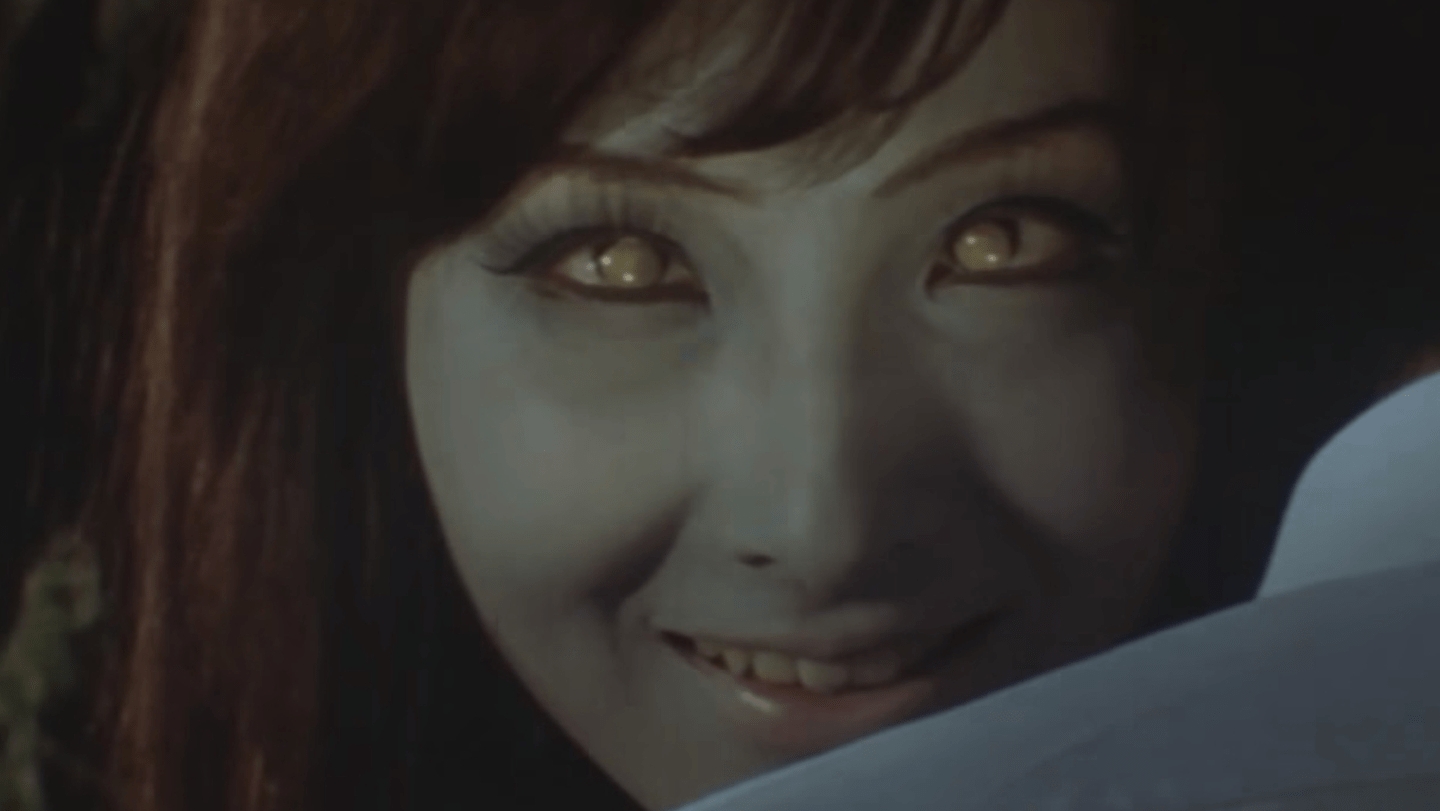At the turn of the millennium, there was an influx of great Japanese horror movies that would eventually be framed as the boom of J-Horror. Films like Ringu, Pulse, Ju-On and Dark Water were all noticed, then remade, by Hollywood studios. While Japanese horror has grown in popularity in America over the past two-and-a-half decades, its history stems back well into the 20th century.
Classic Japanese horror cinema represents some of the most potent visions of the genre put to film, using storytelling devices like ancient folklore, fables and terrifying visions of the future. If you’re in the mood to break out and explore horror movies beyond the American popcorn fluff in the theatres right now – and you should be – then take a look at these vintage Japanese horror movie recommendations instead.
1. Kwaidan (Masaki Kobayashi, 1964)
Based in part on Japanese folklore scholar Lafcadio Hearn’s book Kwaidan: Stories and Studies of Stranger Things, Masaki Kobayashi’s Oscar-nominated horror anthology film is a feast for the senses. Using art direction by Shigemasa Toda that was directly inspired by Japanese kabuki theater and classic paintings, Masaki had complete artistic control over the production which was shot entirely inside an unused airplane hangar. The interior locale gives Kwaidan a dim and haunting feeling even when certain sequences depict daylight and exterior scenes. The stark, contrasting uses of colour make for vibrant visuals; both unsettling and painterly. Each of its four stories takes place during various eras of Japan before the 1900s and feature tales of war, longing and deceit.
2. The Drifting Classroom (Nobuhiko Obayashi, 1981)
Nobuhiko Obayashi’s reputation in the West is defined by his psychedelic horror-comedy romp House (1977), but the rest of his filmography has not been so accessible. If you love House, then a logical next film to seek out is The Drifting Classroom, a surreal horror film based on the popular manga series by Kazuo Umezu, about a school that is transported to a desolate, post-apocalyptic vision of the future. In typical Obayashi style, he combines terror with a sense of whimsy, kinetic camerawork and painterly compositions. Take a chance: let this movie do its own unique dance and dazzle you.
3. Jigoku (Nobuo Nakagawa, 1960)
If you want to find the ancestral origin of modern Japanese horror, look no further than Jigoku. It’s probably had the most indelible influence on J-Horror of the films in this period. Centred on a man named Shiro, who escapes to a supposed haven to rid himself of the guilt he feels for a car crash that left his fiancé Yukiko dead. The transitory nature of the film’s narrative, which goes from its suicidal main characters’ personal struggles to the physical manifestation of demons and lecherous beings in the second, seems to suggest that the Earth itself is the hell we envision. Nobuo Nakagawa had already made eight other horror movies before this one, but this was his masterpiece.
4. Goke, Body Snatcher From Hell (Hajime Sato, 1968)
If you manage to see past the cheesy and perhaps derivative plot – an alien invasion descends into the desert to abduct the passengers of a nearby plane-crash (and soon, the whole population of planet earth) – you get one of the most empathetic, compassionate and desperate cinematic pleas for love amidst a world on fire. In Goke, as the passengers slowly turn on each other like the characters in John Carpenter’s The Thing, we start to get a microcosmic sense of how the world became such an unforgiving place. Hajime had a clear message in mind: he directly inserts photographs of atrocities from the Vietnam War and World War II into the film to draw a distinct parallel of the ways humanity prescribes its own doom. If you loved Christopher Nolan’s Oppenheimer and wondered about the Japanese perspective to global apocalypse, Goke, Body Snatcher From Hell should be a priority.
5. The Vampire Doll (Michio Yamamoto, 1970)
Maybe the most light-hearted of the films on this list, The Vampire Doll is also probably the scariest. When Keiko’s brother Kazuhiko goes missing after a business trip, she and her husband go in search for him and unravel a sinister gothic mystery involving Kazuhiko, his mother and his dead girlfriend. It may seem like a campy “so bad it’s good” movie on first inspection, but The Vampire Doll, like its plot, hides a ton of surprising secrets and a deviously concocted and atmospheric mystery.
6. Under the Blossoming Cherry Trees (Masahiro Shinoda, 1975)
The rustling of cherry trees’ branches, the drifting of their pink and white flower petals, always bring feelings of peace and tranquillity, but director Masahiro Shinoda’s film suggests they hold a long-kept, terrifying secret in Japan. Part of what you could call his “Ghosts of Japan Trilogy” along with Himiko and The Ballad of Orin, Under the Blossoming Cherry Trees tells an epic fable of an unnamed mountain man who kidnaps a maiden from under a cherry tree forest and finds out that she is more than he bargained for. Slowly but surely, she casts a terrifying sense of power over him that breaks him psychologically.
7. Kuroneko (Kaneto Shindo, 1968)
One of the most celebrated films of one of the most recognisable names in Japanese horror, Kuroneko (Black Cat) is horror master Kaneto Shindo’s companion to his earlier horror, Onibaba. A woman who is raped and killed by a group of roving samurai comes back to haunt them one by one. Shindo’s black-and-white cinematography creates lurking shadows. But it’s not only the ghosts and spirits that terrify, the presence of what exists at the edges of the frame – shapes and figures that may not be anything, but may be something lurking, like a black cat camouflaged in the shadows – are equally unsettling.

